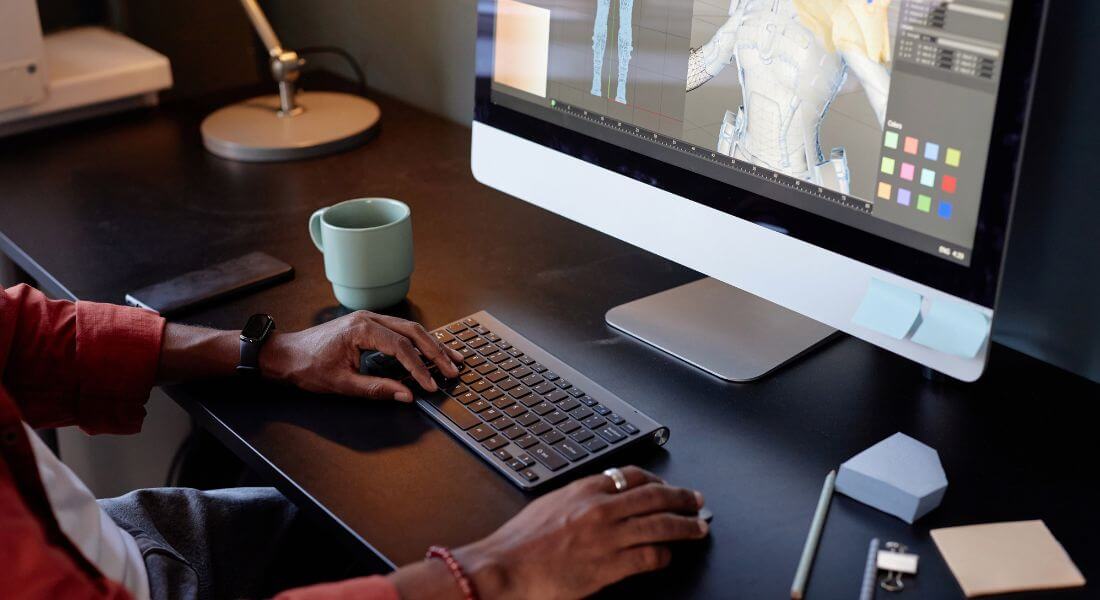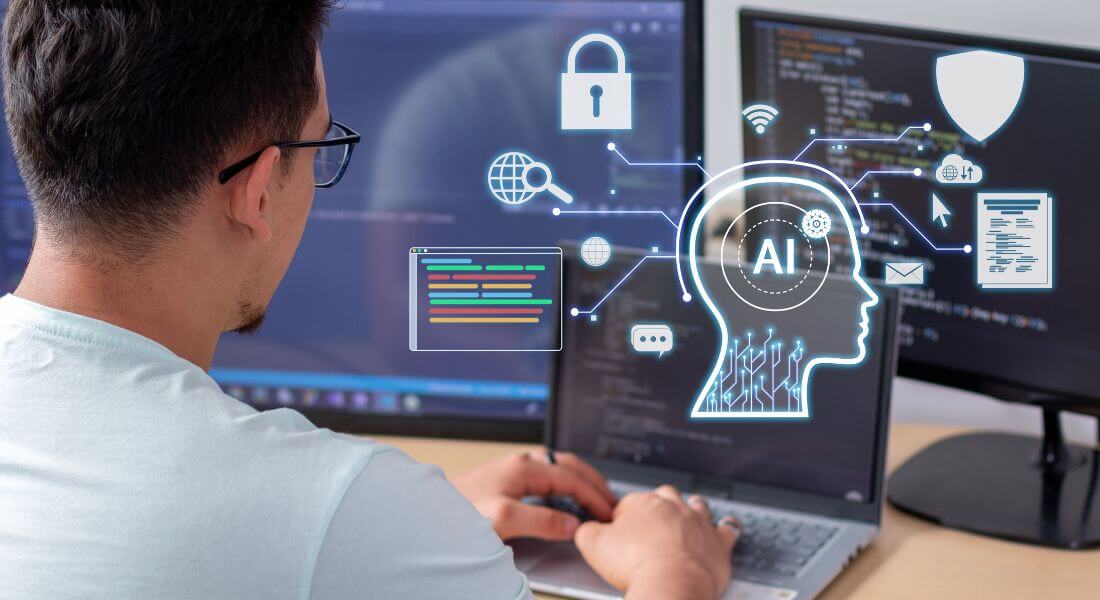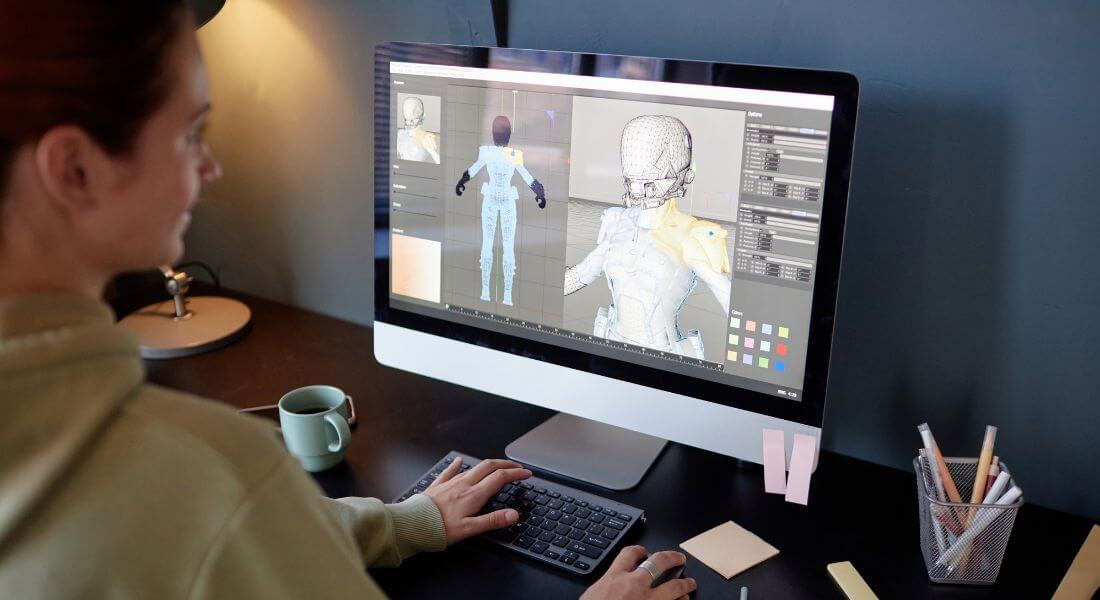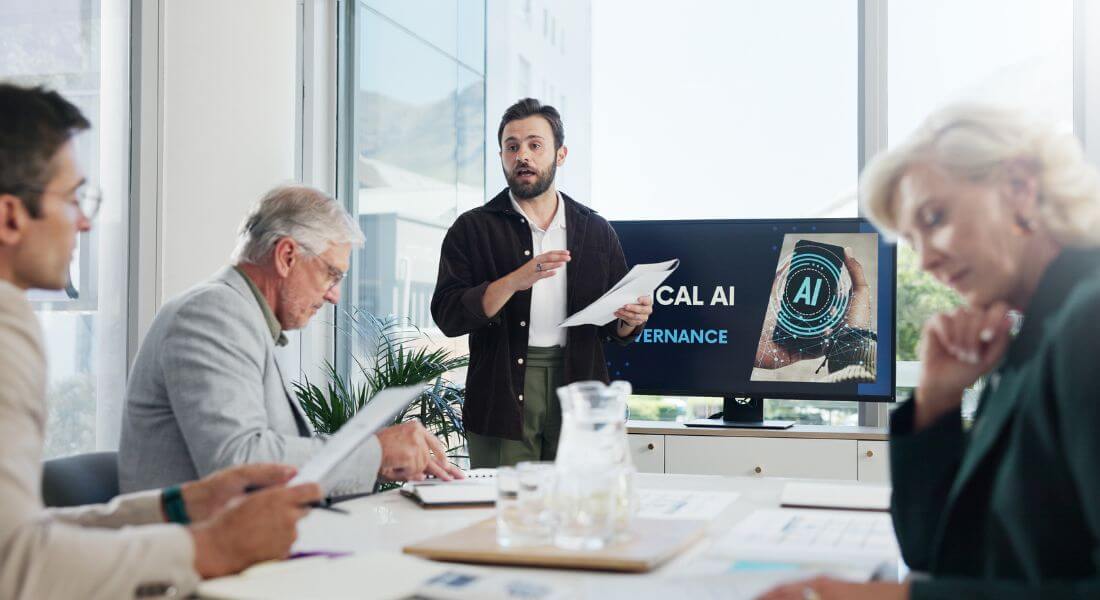
Generative AI is transforming the animation industry but not in the way many once feared. Rather than replacing animators, this innovative technology is proving to be a powerful creative ally. It automates time-consuming, repetitive tasks, allowing artists and designers to reclaim their energy for what truly matters: storytelling, visual aesthetics, and imaginative world-building. From in-between frames to automatic lip-syncing, AI-powered tools are streamlining production pipelines, accelerating timelines, and making animation more accessible than ever. Background generation, motion capture cleanup, and even colour palette suggestions are being handled by AI with increasing precision. Yet, despite its technical efficiency, AI doesn’t override artistic intuition it enhances it. This new frontier in animation is less about substitution and more about collaboration between human creativity and machine intelligence.
Moreover, AI tools are making it easier for smaller studios and independent creators to produce high-quality animations that once required massive budgets and teams. The democratisation of animation through AI is opening new doors for diverse voices and fresh narratives, enriching the industry with broader perspectives. In this article, we’ll explore how generative AI is reshaping the animation workflow from pre-production to post by highlighting where it excels, where it still struggles, and how studios are using it to push the boundaries of visual storytelling. As we enter an era where technology seamlessly integrates with artistry, understanding this evolving partnership is vital for any studio, animator, or content creator aiming to stay ahead of the curve.
What Is Generative AI in Animation?

Generative AI refers to a class of advanced algorithms capable of creating original content such as images, text, video, and sound by analysing vast amounts of input data and learning patterns within them. In the context of animation, generative AI tools are being used to automate and enhance various stages of the creative process. These tools can generate lifelike character movements, automatically fill in the gaps between keyframes (a process known as in-between), rig characters for animation, and even assist with background creation or lighting simulations.
What sets generative AI apart from traditional automation is its ability to learn and adapt. Whereas conventional software follows pre-programmed, rule-based instructions, generative AI leverages machine learning models often neural networks that evolve based on exposure to large datasets. This learning capability enables the AI to produce more nuanced, context-aware, and dynamic results. For example, instead of rigidly copying animation frames, it can interpret motion styles, understand proportions, and reproduce movement with a degree of creativity and fluidity that mimics human decision-making. This transformative technology allows for near real-time output, significantly reducing the time needed for tasks that used to take hours or even days. Animation studios, game developers, and independent creators are rapidly adopting these tools to boost production efficiency without compromising artistic quality. Generative AI can analyse patterns in form, colour, texture, and motion, and then apply that knowledge to new content with impressive precision and consistency.
Moreover, its use isn’t confined to large studios. Cloud-based generative AI platforms are becoming increasingly accessible, giving smaller teams and solo animators the opportunity to produce complex, high-quality animations with fewer resources. This not only levels the playing field but also fosters greater experimentation and diversity in visual storytelling.
Automating Repetitive Tasks: In-Between and Rigging
One of the most time-consuming aspects of animation is in-between creating the transitional frames between keyframes. Generative AI can handle this with impressive efficiency, helping animators maintain fluid motion without drawing every single frame manually. Rigging, the process of building a skeleton for a character, is another area ripe for AI assistance. Generative systems can suggest or create rigs based on 3D models, significantly reducing setup time. This doesn’t eliminate the need for human oversight but accelerates early stages of production.
- Lip-Sync Automation: AI tools can also automate lip-syncing by analysing audio tracks and generating mouth movements that correspond to speech. This not only saves time but also improves consistency across large dialogue-heavy projects.
- In-Between Frame Generation: One of the most labour-intensive stages in traditional animation is in-betweening manually drawing all the frames that sit between two key poses to create the illusion of fluid motion. For years, this process consumed enormous time and effort, especially in hand-drawn animation. Today, generative AI is capable of predicting and generating these intermediate frames automatically by learning from existing motion patterns and style references. These AI-driven tools produce smoother transitions with impressive accuracy, helping artists maintain stylistic coherence while dramatically speeding up the workflow.
- AI-Driven Rigging Assistance: Rigging involves creating a digital skeleton that allows characters to move realistically within a scene. It’s a complex process that requires careful placement of joints, bones, and weight distribution, especially in 3D animation. Generative AI can now analyse 3D models and automatically generate rigs, including hierarchical joint systems and binding weights. This significantly reduces setup time and eliminates many of the repetitive manual steps. While animators still need to fine-tune rigs for performance or artistic nuances, AI-generated rigging offers a strong and efficient starting point.
- Facial Expression Mapping: Beyond syncing lips, animating believable facial expressions is another repetitive yet crucial component of character animation. AI can assist by automatically generating expressions based on tone, emotion, and context. Whether it’s a smirk, frown, raised eyebrow, or subtle eye movement, generative AI can enhance character performance without animators having to build every frame by hand. This speeds up production while still allowing artists to adjust and refine emotional beats.
Enhancing Workflow, Not Replacing Artists

Generative AI isn’t here to replace artists it’s here to empower them. Instead of limiting creativity, AI is expanding what’s possible within the often tight constraints of modern production schedules. It allows studios and independent creators alike to streamline repetitive tasks and redirect their time and energy toward areas that require human insight, emotion, and narrative instinct. For instance, instead of spending hours meticulously syncing lip movements with dialogue, an animator can now use that time to refine a character’s emotional arc, explore more innovative visual styles, or experiment with alternative storyboards. The mundane becomes manageable, freeing up mental space for meaningful creative decisions. This evolving relationship between human and machine has led to the development of hybrid pipelines workflows where AI handles time-intensive technical execution, while artists retain full control over creative direction. Rather than threatening the role of animators, this partnership is reshaping it, allowing them to focus on what truly makes animation resonate: storytelling, emotion, timing, and personality.
Even seasoned industry professionals are beginning to embrace this shift. Many view AI as a productivity booster that helps them meet increasingly complex client demands without sacrificing quality or originality. The result? A more agile, flexible, and creatively driven production environment.
- Faster Iteration Cycles AI accelerates the revision process. Artists can quickly see how changes in movement, lighting, or timing affect the final result and make decisions on the fly. This agility allows for more polished results in less time.
- Non-Destructive Editing: With AI tools integrated into animation software, many tasks can now be carried out non-destructively. For example, automated lip-syncing or motion tweaks can be added on top of existing keyframes without overwriting original work. This gives animators the flexibility to test ideas freely without fear of losing their base animation, improving both quality and confidence in the process.
- Creative Prototyping and Style Exploration: AI tools also assist in generating quick mockups or visual tests, helping artists explore multiple animation styles or visual directions before locking into a final concept. Whether it’s testing colour grading options, timing variations, or different pacing, animators can now prototype ideas more efficiently and select the best direction based on artistic merit rather than deadline pressure.
Creative Experimentation and Style Transfer

Generative AI isn’t just a tool for speeding up production it’s also a dynamic playground for creative experimentation. One of the most exciting applications is style transfer, where the visual aesthetic or technique of a particular artist, film, or artwork can be applied to new content. This allows creators to blend influences, experiment with unconventional looks, or explore how different visual identities transform the tone of a scene or character. Whether it’s replicating the brushstroke texture of a classic painter or mimicking the cinematic style of a specific director, AI enables creative fusion that would be nearly impossible to achieve manually within a reasonable timeframe. These tools are also making visual prototyping far more accessible. Artists can generate multiple style variations, lighting scenarios, and mood palettes in just minutes, allowing for quicker decision-making and more playful exploration during pre-production. AI-generated concept art and visual mockups can serve as a launching point for deeper creative thinking, helping teams visualise potential directions before investing time in complex builds.
For experimental filmmakers, motion designers, and indie animation studios, generative AI provides a cost-effective and innovative way to push the boundaries of their visual language. By removing the technical limitations and allowing for rapid iteration, these tools are unlocking new levels of artistic expression.
Here’s how AI supports creative experimentation in real-world projects:
- Rapid Style Mockups – Artists can apply different art styles to scenes within seconds, making it easier to pitch visual directions to clients or collaborators.
- Concept Testing at Scale – Multiple looks and lighting variations can be tested in parallel, helping refine creative decisions early in the pipeline.
- Cross-Genre Blending – AI enables the combination of stylistic elements from different cultures, time periods, or genres leading to original, hybrid aesthetics that stand out.
Ethical and Creative Boundaries
While generative AI offers remarkable opportunities for animation, it also brings to the forefront complex ethical and creative challenges that must be carefully considered. Questions around authorship, originality, and ownership of AI-generated content remain hot topics in the industry. When AI creates images, animations, or styles based on vast datasets, it becomes difficult to pinpoint who truly owns the final product. This raises concerns about fair credit, compensation, and recognition for the original artists whose works contributed to the AI’s training.
Moreover, there is a growing debate about the potential creative risks of over-relying on AI tools. If studios and creators lean too heavily on AI-generated content, the unique personal styles and emotional nuances that give animation its soul might become diluted. The result could be a homogenisation of visual styles, where many animations start to feel similar or formulaic. That’s why most experts and artists advocate using generative AI as a complementary tool, enhancing human creativity rather than replacing it outright.
As AI continues to become more embedded in animation pipelines, the industry will need to establish clear guidelines around transparency, authorship, and ethical use. These standards will help protect both creators and consumers while fostering trust in AI-generated works.
Important ethical considerations and best practices include:
- Fair Use of Training Data:
It is essential that datasets used to train generative AI models are sourced ethically, respecting copyright and intellectual property laws. Many creative communities and developers are actively advocating for open, transparent data standards that protect artists’ rights and ensure proper attribution. - Maintaining Creative Authenticity:
Creators should strive to preserve their unique artistic voices by using AI as a supportive tool rather than a replacement. Maintaining a balance between AI assistance and human input helps retain the emotional depth and individuality in animated works. - Transparency and Disclosure:
Studios and artists are encouraged to disclose when AI tools have been used in the creation process. Transparency helps audiences understand the creative journey and builds trust, especially as AI-generated content becomes more widespread. - Respecting Cultural and Social Sensitivities:
AI-generated content should be mindful of cultural contexts and avoid perpetuating stereotypes or biases present in training data. Responsible use includes ongoing evaluation of AI outputs to ensure respectful and inclusive storytelling.
Frequently Asked Questions (FAQ)
1. Does generative AI eliminate jobs for animators?
No, generative AI doesn’t replace animators it assists them. It automates tedious tasks like in-betweening or rigging, allowing animators to focus on more creative elements such as storytelling, direction, and design.
2. What are the benefits of using AI for lip-syncing?
AI-based lip-sync tools reduce the time spent on manual frame adjustments while increasing accuracy and consistency. This speeds up production and allows for smoother character animation in dialogue-heavy scenes.
3. Is generative AI suitable for indie animators or only big studios?
Generative AI tools are increasingly accessible, making them viable for indie animators and freelancers. Many platforms now offer affordable or even open-source solutions tailored for smaller teams and personal projects.
4. How does AI affect artistic control?
AI does not override artistic decisions. It serves as a collaborative tool that enhances human creativity by handling repetitive processes, enabling faster iteration and experimentation.
5. Are there any risks in relying too much on AI-generated content?
Yes. Over-reliance on generative AI could lead to uniformity in style or a loss of unique artistic voice. Ethical concerns regarding authorship and dataset usage also need careful consideration.
6. Can AI be used in real-time animation workflows?
Absolutely. Some tools now integrate directly into real-time animation engines like Unity or Unreal, allowing animators to see and tweak AI-generated outputs live during production.
7. What should I look for in an AI animation tool?
Look for features like ease of integration, support for your preferred file formats, quality of AI training data, and the ability to customise outputs. Usability and community support are also key factors.
8. How does generative AI affect animation costs?
Generative AI can significantly reduce costs by automating labor-intensive tasks, cutting production timelines, and enabling small teams to deliver high-quality animations efficiently.
9. Can AI-generated animations meet broadcast or cinematic standards?
Yes. With the right human oversight and refinement, AI-assisted animations can reach the quality required for television, film, and streaming platforms.
10. Is training required to use AI tools effectively in animation?
Most tools are designed with user-friendliness in mind, but a basic understanding of AI workflows and animation principles helps get the best results. Some platforms also offer tutorials or certification.
Final Thoughts: Embracing AI as a Creative Partner in Animation
Generative AI is reshaping animation in practical and imaginative ways. From cutting production time to unlocking new visual styles, it enhances rather than replaces the human creative process. Animators who embrace these tools are not surrendering control but gaining a valuable assistant in their artistic journey.
If you’re interested in leveraging generative AI to elevate your animation projects, reach out to our animation company in London. Our expert team combines cutting-edge technology with creative vision to bring your most ambitious ideas to life. Generative AI isn’t about replacing the artist it’s about enhancing your creative toolkit. Embracing this innovation means accelerating your storytelling while preserving the originality and passion that make your work truly unique.

